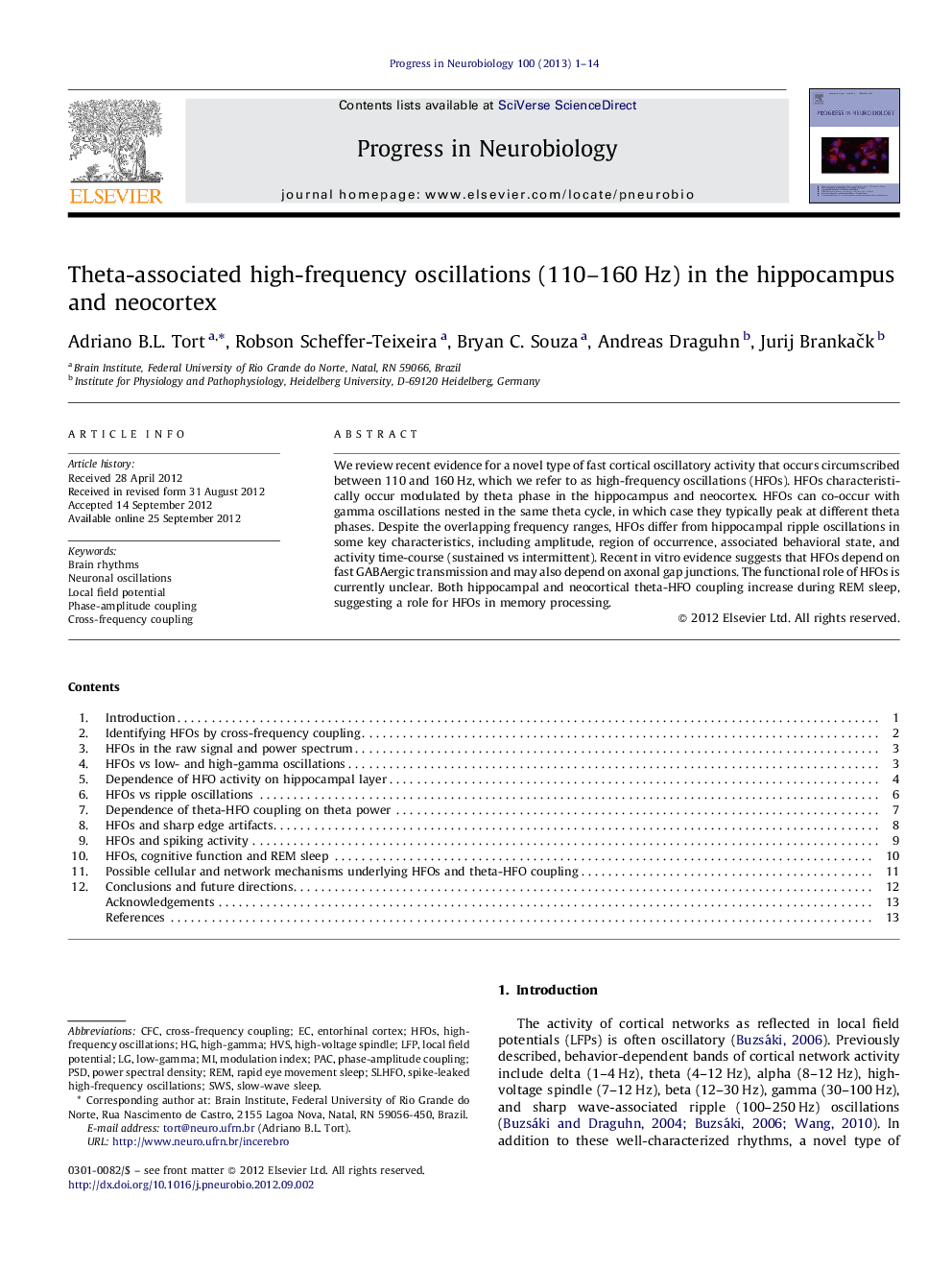| Article ID | Journal | Published Year | Pages | File Type |
|---|---|---|---|---|
| 4353368 | Progress in Neurobiology | 2013 | 14 Pages |
We review recent evidence for a novel type of fast cortical oscillatory activity that occurs circumscribed between 110 and 160 Hz, which we refer to as high-frequency oscillations (HFOs). HFOs characteristically occur modulated by theta phase in the hippocampus and neocortex. HFOs can co-occur with gamma oscillations nested in the same theta cycle, in which case they typically peak at different theta phases. Despite the overlapping frequency ranges, HFOs differ from hippocampal ripple oscillations in some key characteristics, including amplitude, region of occurrence, associated behavioral state, and activity time-course (sustained vs intermittent). Recent in vitro evidence suggests that HFOs depend on fast GABAergic transmission and may also depend on axonal gap junctions. The functional role of HFOs is currently unclear. Both hippocampal and neocortical theta-HFO coupling increase during REM sleep, suggesting a role for HFOs in memory processing.
► Theta modulates high-frequency oscillations (HFOs) in the hippocampus and neocortex. ► Theta-associated HFOs coexist with low- and high-gamma oscillations. ► HFOs, ripples, and gamma oscillations are generated by different mechanisms. ► Theta-associated HFOs are a genuine rhythm and do not reflect extracellular spikes. ► Theta-HFO coupling varies with vigilance state and may underlie cognitive processing.
